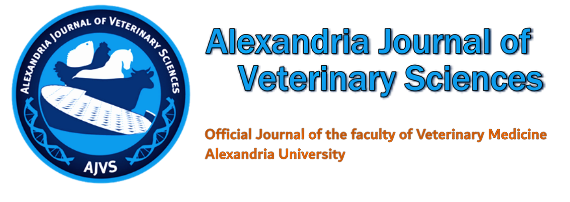
| Review Article Online Published: 21 Apr 2024 | ||||||||||||||||||||||||||||||
AJVS. 2024; 81(0): 51-63 doi: 10.5455/ajvs.196372 Detection Of Viable but Non Culturable (VBNC) Bacteria Using of Propidium Monoazide PCR: A Review Alaa Eldin H. Mustapha, Maha M. Mansour.
| ||||||||||||||||||||||||||||||
| How to Cite this Article |
| Pubmed Style Mustapha AEH, Mansour MM. Detection Of Viable but Non Culturable (VBNC) Bacteria Using of Propidium Monoazide PCR: A Review. AJVS. 2024; 81(0): 51-63. doi:10.5455/ajvs.196372 Web Style Mustapha AEH, Mansour MM. Detection Of Viable but Non Culturable (VBNC) Bacteria Using of Propidium Monoazide PCR: A Review. https://www.alexjvs.com/?mno=196372 [Access: May 04, 2025]. doi:10.5455/ajvs.196372 AMA (American Medical Association) Style Mustapha AEH, Mansour MM. Detection Of Viable but Non Culturable (VBNC) Bacteria Using of Propidium Monoazide PCR: A Review. AJVS. 2024; 81(0): 51-63. doi:10.5455/ajvs.196372 Vancouver/ICMJE Style Mustapha AEH, Mansour MM. Detection Of Viable but Non Culturable (VBNC) Bacteria Using of Propidium Monoazide PCR: A Review. AJVS. (2024), [cited May 04, 2025]; 81(0): 51-63. doi:10.5455/ajvs.196372 Harvard Style Mustapha, A. E. H. & Mansour, . M. M. (2024) Detection Of Viable but Non Culturable (VBNC) Bacteria Using of Propidium Monoazide PCR: A Review. AJVS, 81 (0), 51-63. doi:10.5455/ajvs.196372 Turabian Style Mustapha, Alaa Eldin H., and Maha M. Mansour. 2024. Detection Of Viable but Non Culturable (VBNC) Bacteria Using of Propidium Monoazide PCR: A Review. Alexandria Journal of Veterinary Sciences, 81 (0), 51-63. doi:10.5455/ajvs.196372 Chicago Style Mustapha, Alaa Eldin H., and Maha M. Mansour. "Detection Of Viable but Non Culturable (VBNC) Bacteria Using of Propidium Monoazide PCR: A Review." Alexandria Journal of Veterinary Sciences 81 (2024), 51-63. doi:10.5455/ajvs.196372 MLA (The Modern Language Association) Style Mustapha, Alaa Eldin H., and Maha M. Mansour. "Detection Of Viable but Non Culturable (VBNC) Bacteria Using of Propidium Monoazide PCR: A Review." Alexandria Journal of Veterinary Sciences 81.0 (2024), 51-63. Print. doi:10.5455/ajvs.196372 APA (American Psychological Association) Style Mustapha, A. E. H. & Mansour, . M. M. (2024) Detection Of Viable but Non Culturable (VBNC) Bacteria Using of Propidium Monoazide PCR: A Review. Alexandria Journal of Veterinary Sciences, 81 (0), 51-63. doi:10.5455/ajvs.196372 |








